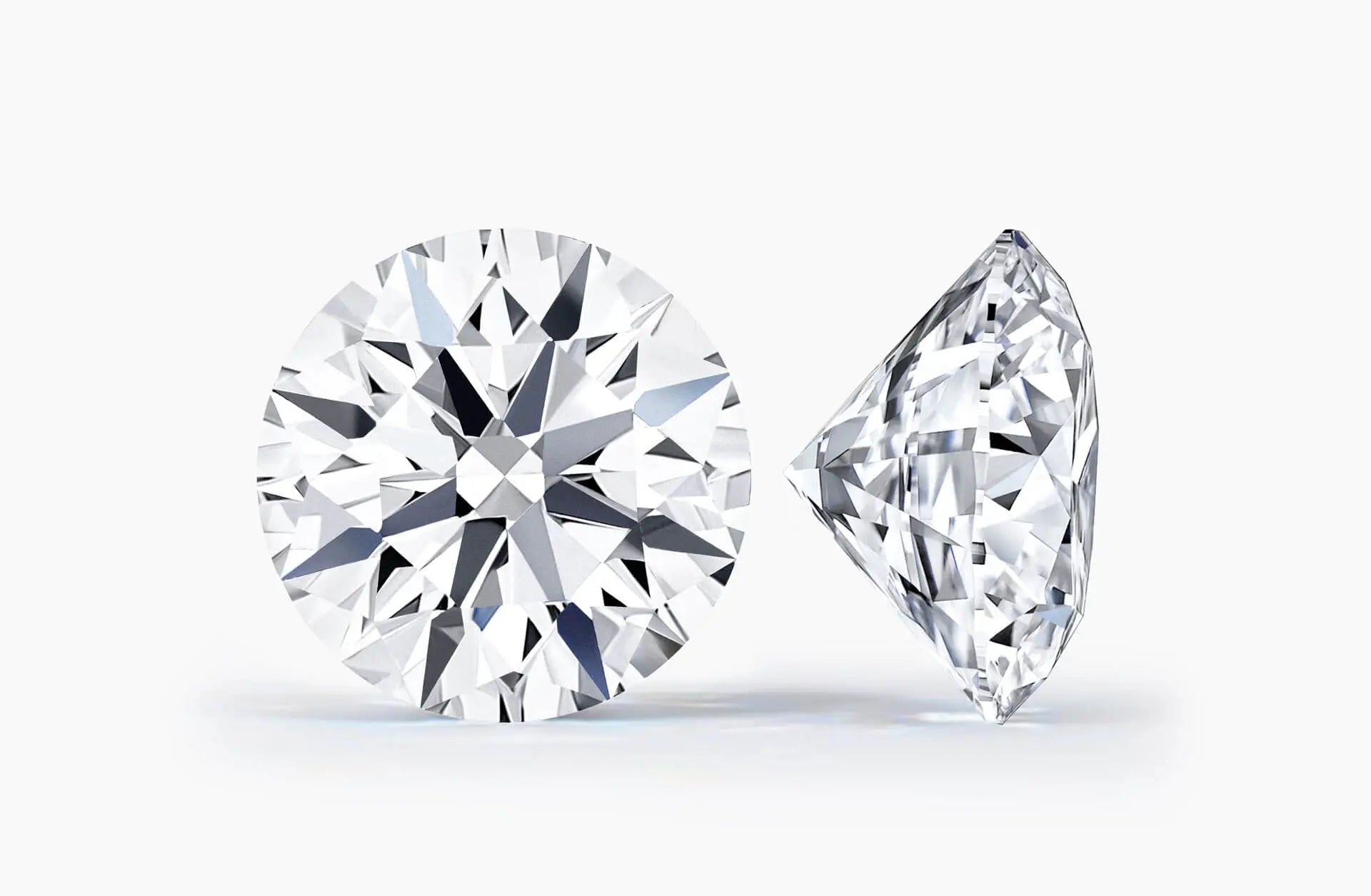
Choosing a Stone: Lab-Grown Diamond vs. Moissanite
Selecting the perfect stone is a crucial step in custom-made jewellery design. Lab-grown diamonds vs. moissanite are two enticing options that often stand out. In this article, we’ll explore the differences between lab-grown diamonds and moissanite. Shedding light on their unique characteristics, therefore making your decision-making process easier.
Lab-grown Diamonds vs. Moissanite: The Distinct Origins
Lab-grown diamonds are marvels of modern science. Created in controlled environments to replicate the natural diamond formation process. These diamonds share all the optical and chemical properties of their earth-mined counterparts. What makes them exceptional is their ethical and environmentally friendly production process. As a result, sidestepping the ethical, environmental and budget concerns tied to natural diamonds.
The Art of Creation
There are two distinct methods to create lab-grown diamonds. Chemical Vapor Deposition (CVD) and High-Pressure, High-Temperature (HPHT). Both processes result in high-quality, gem-ready diamonds. Both with identical chemical and physical properties to natural diamonds.
Moissanite: The “Space Diamond” – A Gem Born from the Stars
Moissanite is often regarded as a diamond simulant or alternative. It is a unique gemstone with a fascinating origin story. It was first discovered by French scientist Henri Moissan in a crater in Arizona in 1893. Initially mistaken for a diamond, it earned its moniker as the “Space Diamond” or “Stardust.” Today, the majority of moissanite used in jewellery is lab-created.
The Path to Brilliance
Creating moissanite involves the Lely process. First, this process starts with combining high-purity silicon and carbon. Secondly, by heating the mixture in an inert atmosphere. This forms silicon carbide crystals. Which are then cut, faceted, and fashioned into various shapes and sizes. This synthetic production has popularized moissanite among those seeking exquisite gemstones.
Key Differences: Lab-Grown Diamonds vs. Moissanite
Sparkle and Appearance:
On the other hand, moissanite possesses a unique sparkle and appearance. This is due to its high refractive index. Thus, offering a colorful, rainbow-like brilliance, often described as a “disco ball” effect. This distinctive appearance sets moissanite apart from diamonds.
Composition:
Diamonds, composed of 99.95 per cent carbon, stand as the only gems made of a single element. While moissanite comprises silicon carbide (SiC).
Colour Quality:
Both lab-grown diamonds and moissanite come in various shapes, sizes, carats, and qualities. Expertly evaluated on the GIA’s 4Cs grading scale. They can also exhibit fancy colours, including green, pink, blue, yellow, and more.
Clarity:
Moissanite is almost always free of inclusions, with no eye-visible imperfections. Lab-grown diamonds can vary in clarity, ranging from flawless (F) to heavily included (I3).
Price:
Moissanite is generally more affordable than lab-grown diamonds. While their quality factors and carat weight are equal. Production processes and market demand influence the pricing difference.
Refraction:
Moissanite has a higher refractive index and light dispersion. Therefore, resulting in a more intense sparkle and light dispersion than diamonds. As a result, earning it the title of the world’s most brilliant gemstone.
Ethics and Sustainability:
Both lab-grown diamonds and moissanite are ethical and sustainable choices. Both productions occur in controlled laboratory environments. As a result, they are free from the ethical concerns associated with diamond mining.
Hardness, Durability, and Scratch Resistance:
Both lab-grown diamonds and moissanite are highly durable and suitable for daily wear. The Mohs scale of hardness rates them at 10 and 9.25. Therefore, making them resilient against scratches and abrasions. Their durability ensures longevity in jewellery.
So, Which One Should You Choose?
So how do you choose between lab-grown diamonds and moissanite? This depends on your preferences, budget, and aesthetic tastes. Consider the following factors when making your choice:
Aesthetics:
Lab-grown diamonds mimic natural diamonds in composition and appearance. While moissanite offers a unique, colourful sparkle.
Hardness and Durability:
Lab-grown diamonds are slightly harder than moissanite. But the difference is minimal for everyday wear.
Budget:
Gemologists grade both gemstones according to quality factors. With moissanite generally being more affordable than lab-grown diamonds.
Rarity and Uniqueness:
Moissanite’s rainbow-like sparkle sets it apart. Therefore, making it a unique choice, while lab-grown diamonds resemble natural diamonds.
Ethical and Environmental Considerations:
Both options are ethical and sustainable. They both avoid the ethical concerns and environmental impact associated with mined diamonds.
Purpose:
Consider the specific optical and chemical properties of each gemstone. Then choose based on your desired appearance and symbolism.
Personal Preferences:
Choose the stone that resonates with you. Make sure that you are proud and delighted with your jewellery selection.
Who Should Choose Moissanite?
If you value Moissanite’s beauty, affordability, sustainability, and ethics, it can be an excellent choice for you. It offers a wide range of sizes, shapes, and carats to fit your budget and design preferences.
Who Should Choose Lab-Grown Diamonds?
Lab-grown diamonds provide the same chemical and optical properties as natural diamonds. Therefore, offering timeless elegance and beauty. If you seek a gemstone that mirrors the allure of natural diamonds at a fraction of the price, lab-grown diamonds may be your ideal choice.
In Conclusion
Both lab-grown diamonds and moissanite offer appealing options. For those seeking high-quality, affordable, and ethically conscious alternatives to traditional diamonds. They provide beauty, durability, and sustainability. Without the ethical concerns and environmental impact often associated with diamond mining. Your choice between these two remarkable stones hinges on your personal style, values, and preferences. As a result, ensuring that your jewellery piece becomes a cherished symbol of your individuality and taste.
References:








